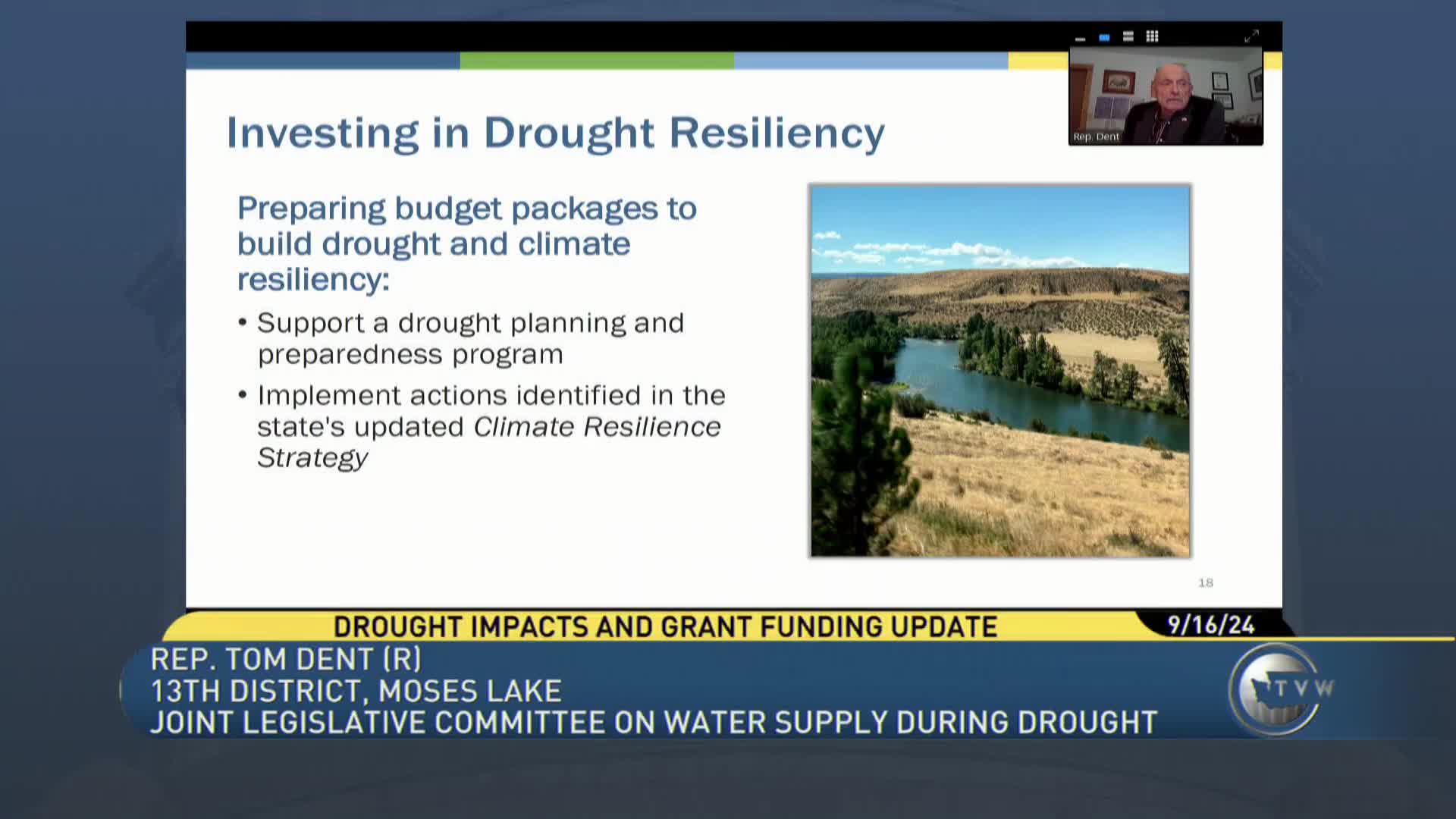Water supply crisis deepens amid changing drought patterns
September 16, 2024 | Joint Legislative Committee on Water Supply During Drought, Joint, Work Groups & Task Forces, Legislative Sessions, Washington
This article was created by AI summarizing key points discussed. AI makes mistakes, so for full details and context, please refer to the video of the full meeting. Please report any errors so we can fix them. Report an error »

In a recent government meeting, discussions centered on the complexities of drought, particularly the distinction between general precipitation deficits and snowpack droughts. Representative Dent raised critical questions regarding the implications of these drought types on water supply and agricultural practices.
Officials emphasized that drought is not merely defined by a lack of rainfall but also by the timing and form of precipitation. In typical years, snowpack accumulates during winter and gradually melts in spring and summer, providing a steady water supply for ecosystems, agriculture, and communities. However, this year presented challenges, with approximately 90% of normal precipitation falling as rain rather than snow due to warmer winter temperatures. This shift leads to earlier runoff or sudden surges of water, disrupting the expected availability of water for farmers and fish populations.
The meeting highlighted the need for a deeper understanding of these dynamics, as the timing of water availability is crucial for irrigation practices and ecological balance. Stakeholders are urged to consider these factors in future water management discussions to mitigate the impacts of changing weather patterns on both agriculture and natural habitats.
Officials emphasized that drought is not merely defined by a lack of rainfall but also by the timing and form of precipitation. In typical years, snowpack accumulates during winter and gradually melts in spring and summer, providing a steady water supply for ecosystems, agriculture, and communities. However, this year presented challenges, with approximately 90% of normal precipitation falling as rain rather than snow due to warmer winter temperatures. This shift leads to earlier runoff or sudden surges of water, disrupting the expected availability of water for farmers and fish populations.
The meeting highlighted the need for a deeper understanding of these dynamics, as the timing of water availability is crucial for irrigation practices and ecological balance. Stakeholders are urged to consider these factors in future water management discussions to mitigate the impacts of changing weather patterns on both agriculture and natural habitats.
View full meeting
This article is based on a recent meeting—watch the full video and explore the complete transcript for deeper insights into the discussion.
View full meeting
